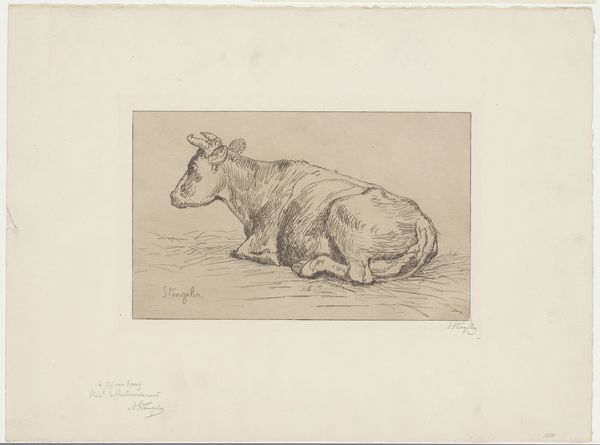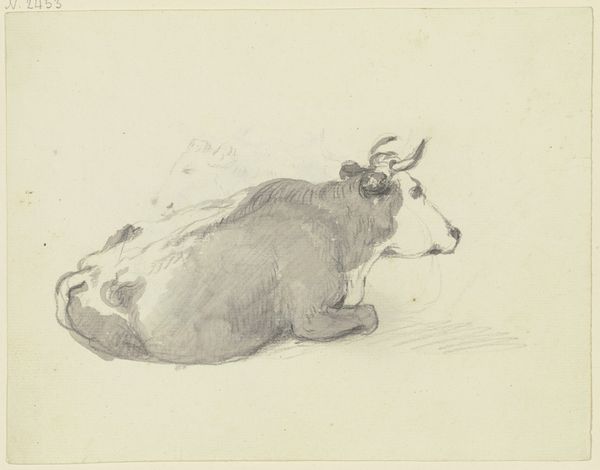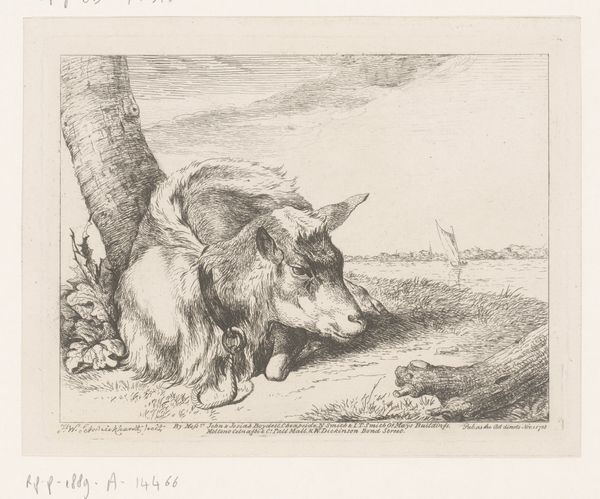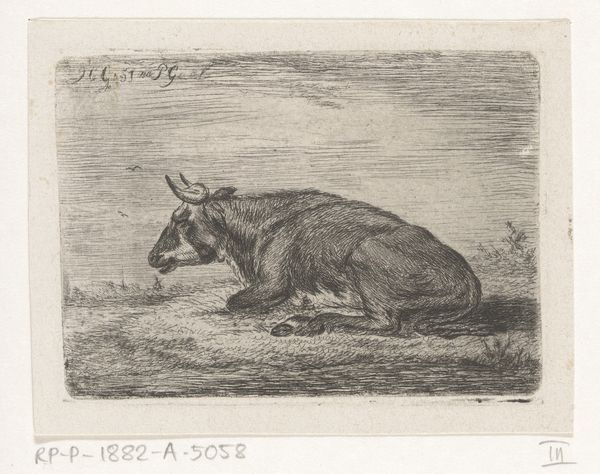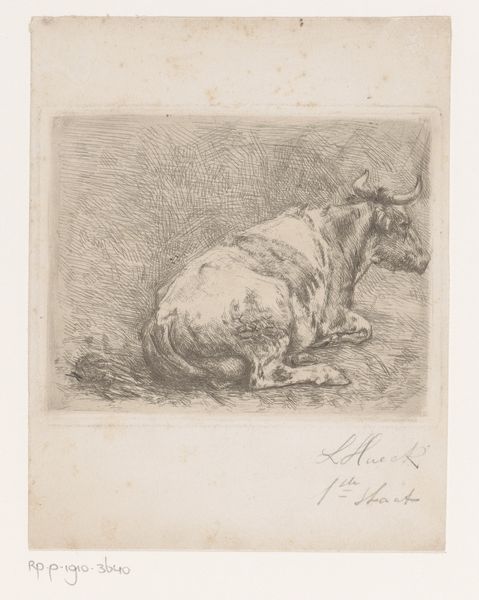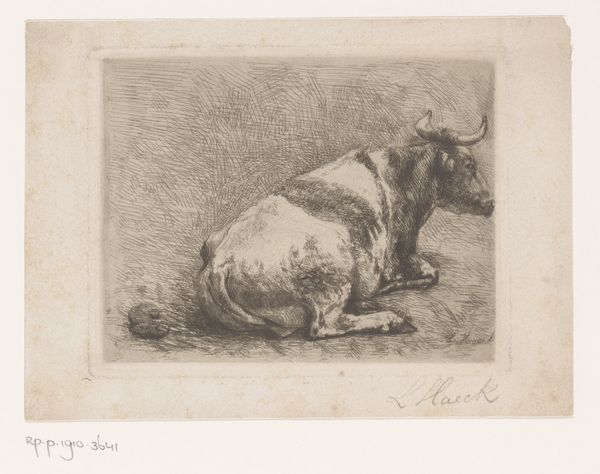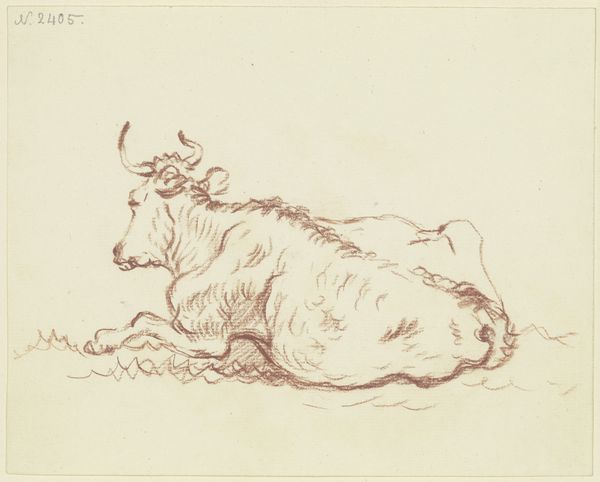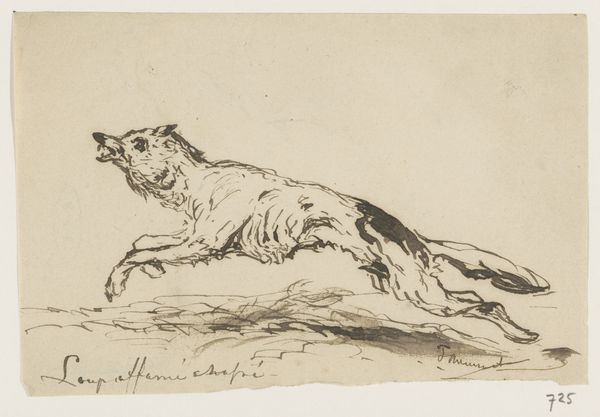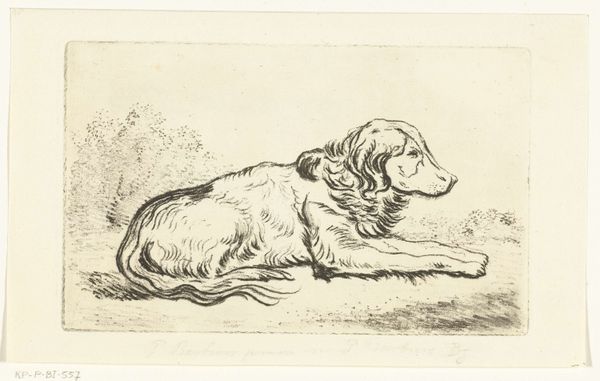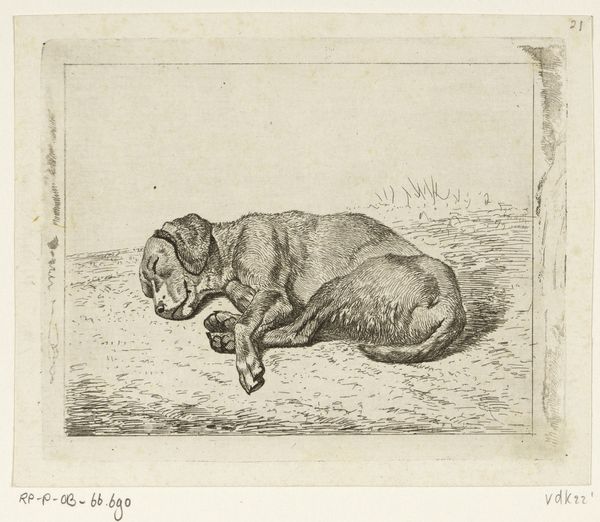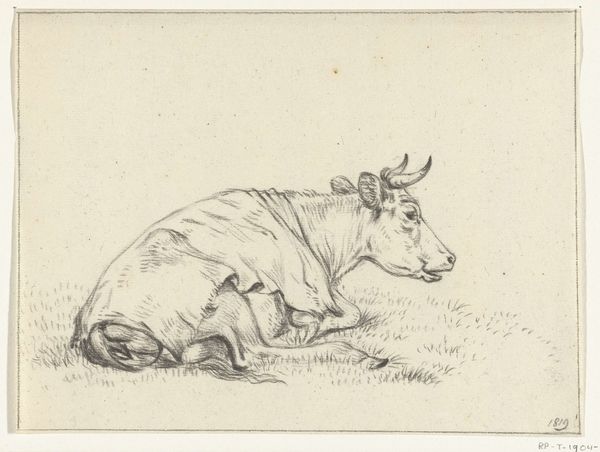
drawing, print, etching
#
drawing
#
animal
# print
#
etching
#
landscape
#
figuration
#
realism
Dimensions: height 95 mm, width 142 mm
Copyright: Rijks Museum: Open Domain
Hendrik Jozef Franciscus van der Poorten created this etching, Liggende geit, in the 19th century. The image shows a goat reclining, the epitome of rural serenity. But what can this image tell us about 19th-century Dutch society? The Netherlands in this period was undergoing significant social and economic change. The Dutch Golden Age was long past and the country was trying to redefine itself, and its national identity. Images of rural life, such as this goat, were very popular at the time. They presented a picture of an idealized world and a sense of stability. The art market was growing and artists were now more reliant than ever before on the patronage of the rising middle class. As art historians, we can examine sales records, letters, and other documentary evidence to better understand the meaning of this image and the role of the artist in Dutch society. The art object becomes a lens through which we can understand broader historical transformations.
Comments
No comments
Be the first to comment and join the conversation on the ultimate creative platform.
